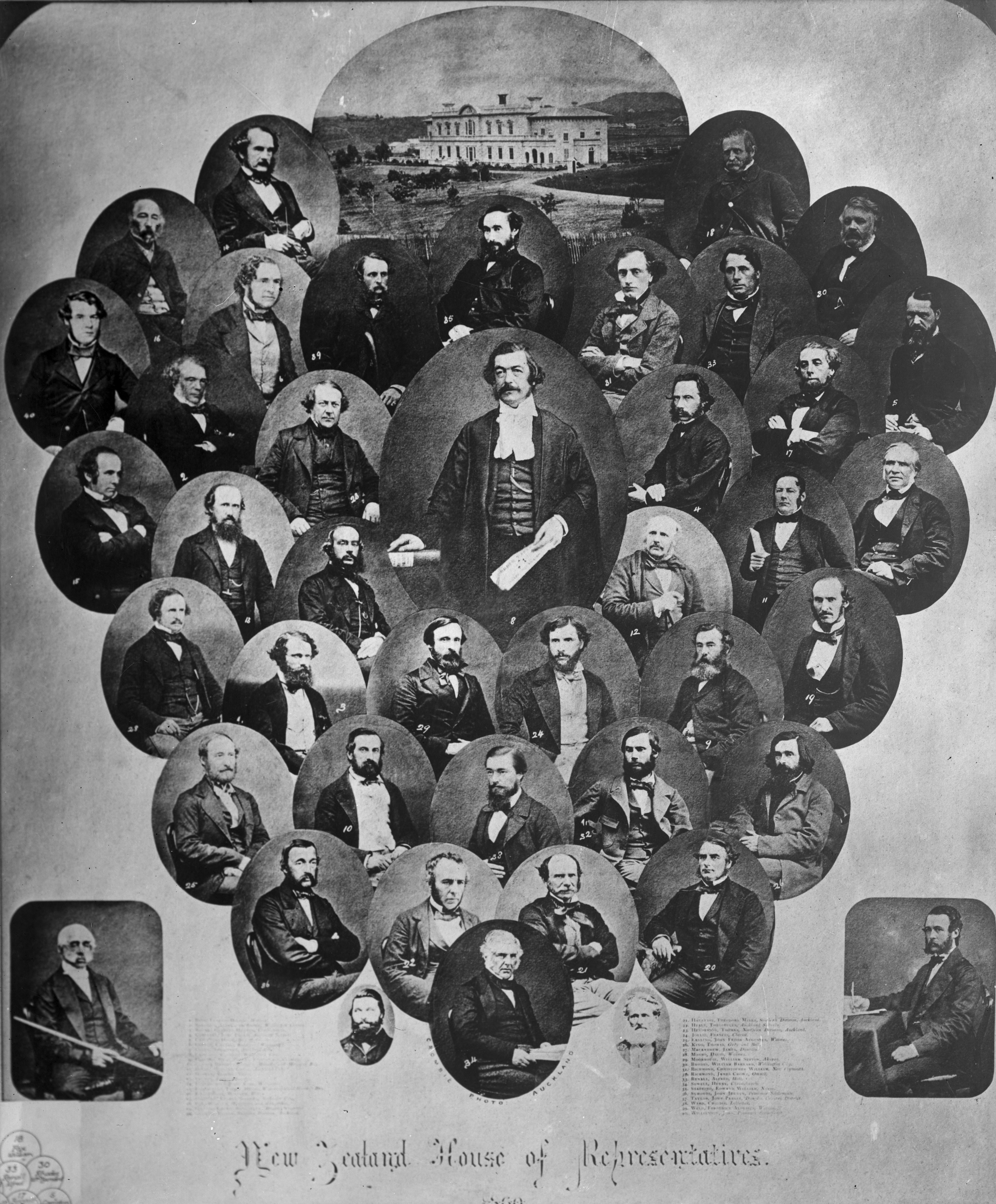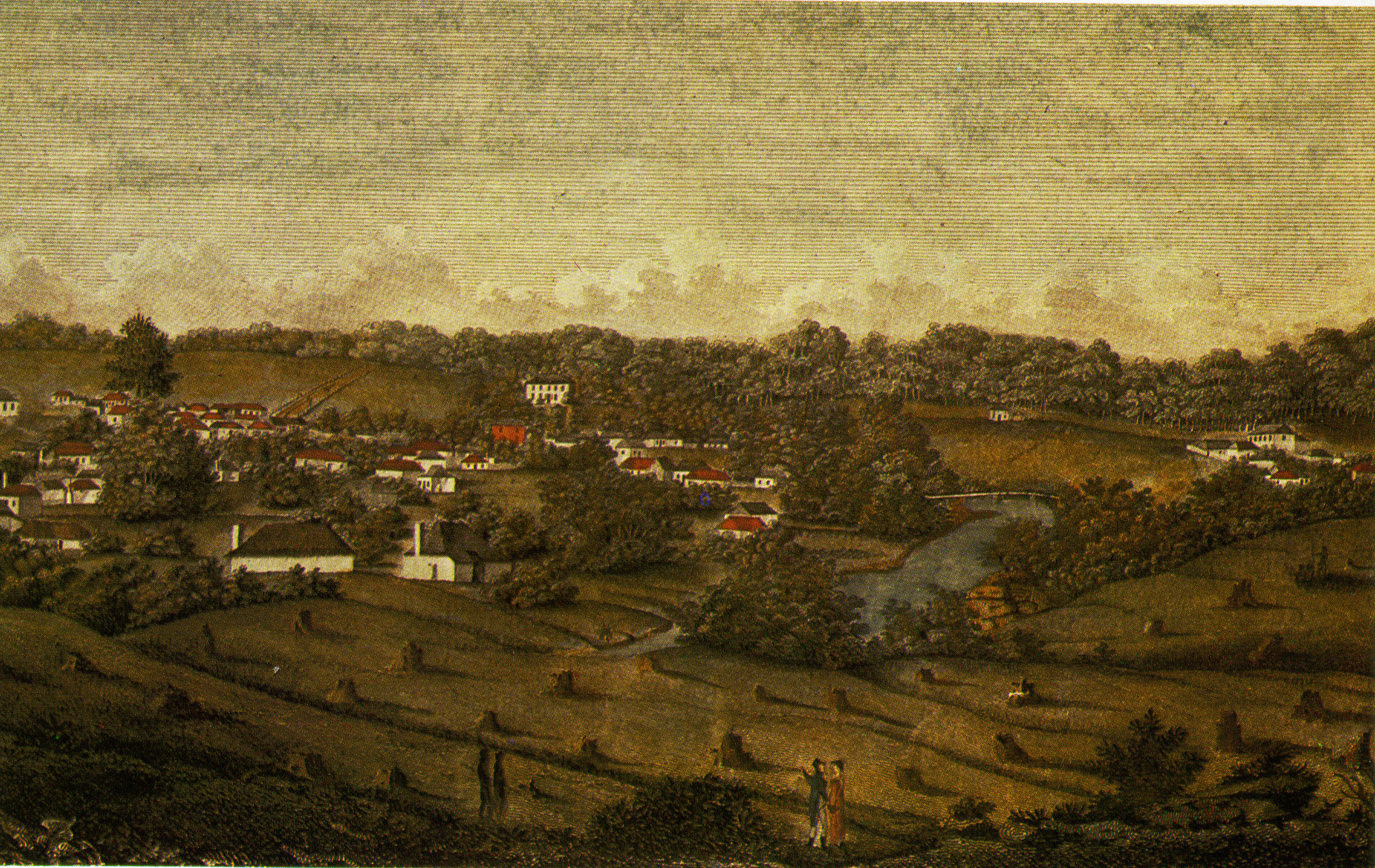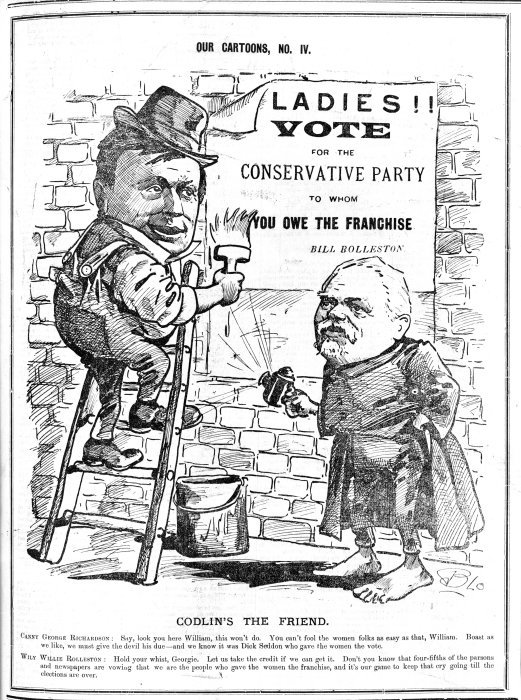|
Alfred Cox (politician)
Alfred Cox (3 June 1825 – 23 May 1911) was a 19th-century runholder and Member of the New Zealand House of Representatives. Born in New South Wales into an upper middle class military family, he was sent home to England to learn about farming. Upon returning to New South Wales, he heard about the large profits that were possible in South Canterbury and bought licences for land that he had not seen. He stocked the land, put a manager in charge and made another trip to England with his wife and their, at that time, small family. He moved to New Zealand permanently in 1857 and lived on his large farm, Raukapuka, which stretched from the sea to the foothills, and of which the homestead was located in present-day Geraldine. He sold his South Canterbury interests and moved to the Waikato, where he bought large land holdings in Hamilton and Thames. He tried to drain his swamp land and lost a lot of money with those ventures. He sold up in 1882 and moved to Christchurch, where he reti ... [...More Info...] [...Related Items...] OR: [Wikipedia] [Google] [Baidu] |
Heathcote (New Zealand Electorate)
Heathcote was a 19th-century parliamentary electorate in Christchurch, New Zealand. Population centres The electorate was based on the Heathcote Valley suburb. History Heathcote existed from 1861 to 1893. George Williamson Hall resigned in 1862. He was succeeded by William Sefton Moorhouse in the . Moorhouse himself resigned the following year and was succeeded by Alfred Cox in the . John Hall, the younger brother of George and who was later to become the 12th Premier, won the against George Buckley and represented Heathcote until 1872, when he resigned due to health reasons. At the , John Cracroft Wilson was elected unopposed to represent the electorate. James Fisher the represented the electorate over the next two terms, from 1876 to 1881. He was succeeded by lawyer Henry Wynn-Williams, who won the . During the next term, beginning with the , John Coster was the representative, until his death on 17 December 1886. The was won by Frederic Jones. Jones was confirmed in ... [...More Info...] [...Related Items...] OR: [Wikipedia] [Google] [Baidu] |
New Zealand House Of Representatives
The House of Representatives is the sole chamber of the New Zealand Parliament. The House passes Law of New Zealand, laws, provides Ministers of the New Zealand Government, ministers to form Cabinet of New Zealand, Cabinet, and supervises the work of government. It is also responsible for adopting the state's New Zealand Budget, budgets and approving the state's accounts. The House of Representatives is a Representative democracy, democratic body consisting of representatives known as members of parliament (MPs). There are normally 120 MPs, though this number can be higher if there is an Overhang seat, overhang. Elections in New Zealand, Elections take place usually every three years using a mixed-member proportional representation system which combines First-past-the-post voting, first-past-the-post elected legislative seat, seats with closed party lists. 72 MPs are elected directly in single-member New Zealand electorates, electoral districts and further seats are filled by ... [...More Info...] [...Related Items...] OR: [Wikipedia] [Google] [Baidu] |
The Oamaru Mail
The ''Oamaru Mail'' is a weekly community newspaper published each Friday in Oamaru, New Zealand, by the Dunedin–based media company Allied Press Ltd that serves the North Otago area. The motto of the paper is "Your community, Your News". History George Jones The ''Oamaru Mail'' was first launched in April 1876 as the ''Evening Mail''. The newspaper struggled financially for a few months with its shareholders considering winding up the company. In 1877, the newspaperman George Jones bought up the ''Evening Mail''. Under Jones' ownership, the ''Evening Mail'' covered railway construction and land ownership. In 1877, the ''Evening Mail'' was caught up in a criminal libel trial after Jones published an article accusing the Attorney-General Frederick Whitaker of promoting a Native Land Bill to assist in the acquisition of 2000,000 acres of confiscated Māori land for himself and his friends. Jones was acquitted during that trial, which boosted the ''Evening Mail'' fortunes and ... [...More Info...] [...Related Items...] OR: [Wikipedia] [Google] [Baidu] |
99th (Lanarkshire) Regiment Of Foot
The 99th (Lanarkshire) Regiment of Foot was an infantry regiment of the British Army, formed in 1824. It amalgamated with the 62nd (Wiltshire) Regiment of Foot to form the Duke of Edinburgh's (Wiltshire Regiment) in 1881. History Formation The regiment was raised in Edinburgh by Major-General Gage John Hall as the 99th Regiment of Foot, in response to the threat posed by the French intervention in Spain, in March 1824. It was a distinct unit, unrelated to earlier units designated as the 99th Regiment of the British Army. In 1832, the new 99th Regiment received its county title, becoming the 99th (Lanarkshire) Regiment of Foot. The Victorian era During its early years, the 99th spent much of its time in the Pacific. The first detachments of the 99th Regiment arrived in Australia with transported convicts aboard the transport ship ''North Briton'', destined for Tasmania, in 1842. [...More Info...] [...Related Items...] OR: [Wikipedia] [Google] [Baidu] |
Great Famine (Ireland)
The Great Famine ( ga, an Gorta Mór ), also known within Ireland as the Great Hunger or simply the Famine and outside Ireland as the Irish Potato Famine, was a period of starvation and disease in Ireland from 1845 to 1852 that constituted a historical social crisis which subsequently had a major impact on Irish society and history as a whole. With the most severely affected areas in the west and south of Ireland, where the Irish language was dominant, the period was contemporaneously known in Irish as , literally translated as "the bad life" (and loosely translated as "the hard times"). The worst year of the period was 1847, which became known as "Black '47".Éamon Ó Cuív – the impact and legacy of the Great Irish Famine During the Great Hunger, roughly 1 million people died and more than 1 million Irish diaspora, fled the country, causing the country's population to fall by 20–25% (in some towns falling as much as 67%) between 1841 and 1871.Carolan, MichaelÉireann's ... [...More Info...] [...Related Items...] OR: [Wikipedia] [Google] [Baidu] |
William Vincent Wallace
William Vincent Wallace (11 March 1812 – 12 October 1865) was an Irish composer and pianist. In his day, he was famous on three continents as a double virtuoso on violin and piano. Nowadays, he is mainly remembered as an opera composer of note, with key works such as ''Maritana'' (1845) and '' Lurline'' (1847/60), but he also wrote a large amount of piano music (including some virtuoso pieces) that was much in vogue in the 19th century. His more modest output of songs and ballads, equally wide-ranging in style and difficulty, was also popular in his day, some numbers being associated with famous singers of the time. Early life Wallace was born at Colbeck Street, Waterford, Ireland. Both of his parents were Irish; his father, Spencer Wallace of County Mayo, one of four children, who was born in Killala, County Mayo in 1789, became a regimental bandmaster with the North Mayo Militia based in Ballina. William was born while the regiment was stationed for one year in Waterfo ... [...More Info...] [...Related Items...] OR: [Wikipedia] [Google] [Baidu] |
Samuel Marsden
Samuel Marsden (25 June 1765 – 12 May 1838) was an English-born priest of the Church of England in Australia and a prominent member of the Church Missionary Society, believed to have introduced Christianity to New Zealand. Marsden was a prominent figure in early New South Wales and Australian history, partly through his ecclesiastical offices as the colony's senior Church of England cleric and as a pioneer of the Australian wool industry, but also for his employment of convicts for farming and his actions as a magistrate at Parramatta, both of which attracted contemporary criticism. Early life Born in Farsley, near Pudsey, Yorkshire in England as the son of a Wesleyan blacksmith turned farmer, Marsden attended the village school and spent some years assisting his father on the farm. In his early twenties his reputation as a lay preacher drew the attention of the evangelical Elland Society, which sought to train poor men for the ministry of the Church of England. With a scho ... [...More Info...] [...Related Items...] OR: [Wikipedia] [Google] [Baidu] |
Parramatta
Parramatta () is a suburb and major Central business district, commercial centre in Greater Western Sydney, located in the state of New South Wales, Australia. It is located approximately west of the Sydney central business district on the banks of the Parramatta River. Parramatta is the administrative seat of the Local government areas of New South Wales, local government area of the City of Parramatta and is often regarded as the main business district of Greater Western Sydney. Parramatta also has a long history as a second administrative centre in the Sydney metropolitan region, playing host to a number of state government departments as well as state and federal courts. It is often colloquially referred to as "Parra". Parramatta, founded as a British settlement in 1788, the same year as Sydney, is the oldest inland European settlement in Australia and is the economic centre of Greater Western Sydney. Since 2000, government agencies such as the New South Wales Police Force ... [...More Info...] [...Related Items...] OR: [Wikipedia] [Google] [Baidu] |
The King's School, Parramatta
The King's School is an Education in Australia#Non-government schools, independent Anglican Church of Australia, Anglican, Pre-school education, early learning, primary school, primary and secondary school, secondary day and boarding school, boarding school for boys, located in North Parramatta, New South Wales, North Parramatta in the western suburbs of Sydney, New South Wales, Australia. Founded in 1831, the school is Australia's oldest independent school, and is situated on a suburban campus. The School has about 2,100 students from kindergarten to Year 12 and about 430 boarders from Years 5–12, making it one of the largest boarding schools in Australia. It is Australia's oldest boarding school. The school is affiliated with the Headmasters' and Headmistresses' Conference, the Association of Heads of Independent Schools of Australia (AHISA), the Junior School Heads Association of Australia (JSHAA), and the Australian Boarding Schools' Association (ABSA). It is a G30 Schools, ... [...More Info...] [...Related Items...] OR: [Wikipedia] [Google] [Baidu] |
William Rolleston
William Rolleston (19 September 1831 – 8 February 1903) was a New Zealand politician, public administrator, educationalist and Canterbury provincial superintendent. Early life Rolleston was born on 19 September 1831 at Maltby, Yorkshire as the 9th child of the Rev. George Rolleston and Anne Nettleship. His brother was the physician and zoologist George Rolleston. He attended Rossall School and Emmanuel College, where he graduated in 1855 with second class honours in the classical tripos. He had intended to move to Canterbury but his father advised against it so he took up tutoring. However, this was merely a means of raising enough money to leave England in order to reject 'Conservatives and Ecclesiastics'. Political career Rolleston first joined the Canterbury Provincial Council when he was appointed to the Canterbury Executive Council on 4 December 1863. His tenure on the Executive Council finished on 16 June 1865. On 23 January 1864, he was elected as a provincial counci ... [...More Info...] [...Related Items...] OR: [Wikipedia] [Google] [Baidu] |
Canterbury Provincial Council
The Canterbury Province was a province of New Zealand from 1853 until the abolition of provincial government in 1876. Its capital was Christchurch. History Canterbury was founded in December 1850 by the Canterbury Association of influential Englishmen associated with the Church of England. (An attempt was initially made to restrict residence in the province to members of the church but this was abandoned.) The ''Charlotte Jane'' and the '' Randolph''—the first two of the First Four Ships—arrived in the area on 16 December 1850, later celebrated as the province's Anniversary Day. In 1852, the Parliament of the United Kingdom passed the New Zealand Constitution Act 1852, which amongst other things established provincial councils. The Constitution contained specific provisions for the Canterbury Association; the first being that the new General Assembly (New Zealand Parliament) could not amend the legislation establishing the Canterbury Association, the second being that the C ... [...More Info...] [...Related Items...] OR: [Wikipedia] [Google] [Baidu] |
Hamilton, New Zealand
Hamilton ( mi, Kirikiriroa) is an inland city in the North Island of New Zealand. Located on the banks of the Waikato River, it is the seat and most populous city of the Waikato region. With a territorial population of , it is the country's fourth most-populous city. Encompassing a land area of about , Hamilton is part of the wider Hamilton Urban Area, which also encompasses the nearby towns of Ngāruawāhia, Te Awamutu and Cambridge. In 2020, Hamilton was awarded the title of most beautiful large city in New Zealand. The area now covered by the city was originally the site of several Māori villages, including Kirikiriroa, from which the city takes its Māori name. By the time English settlers arrived, most of these villages, which sat beside the Waikato River, were abandoned as a result of the Invasion of Waikato and land confiscation (''Raupatu'') by the Crown. Initially an agricultural service centre, Hamilton now has a diverse economy and is the third fastest growing urba ... [...More Info...] [...Related Items...] OR: [Wikipedia] [Google] [Baidu] |




.jpg)



